#melittology
Text
Wool-Carder Bees: these solitary bees harvest the soft, downy hairs that grow on certain plants, rolling them into bundles and then using the material to line their nests

Wool-carder bees build their nests in existing cavities, usually finding a hole/crevice in a tree, a plant stem, a piece of rotting wood, or a man-made structure, and then lining the cavity with woolly plant fibers, which are used to form a series of brood cells.
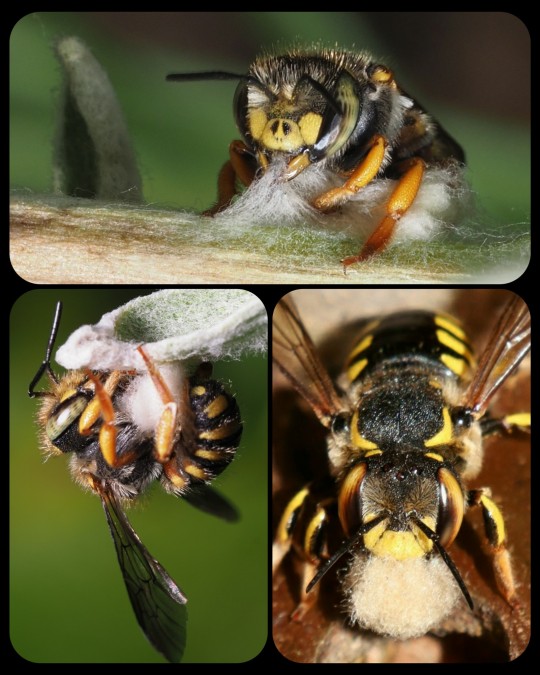
The fibers (known as trichomes) are collected from the leaves and stems of various plants, including lamb’s ear (Stachys byzantina), mulleins, globe thistle, rose campion, and other fuzzy plants.

From the University of Florida's Department of Entomology & Nematology:
The female uses her toothed mandibles to scrape trichomes off fuzzy plants and collects a ball of the material under her abdomen. She transports these soft plant fibers to her selected nest site and uses them to line a brood cell. Next, she collects and deposits a provision of pollen and nectar into the cell, enough pollen to feed a larva until it is ready to pupate. Lastly, she lays a single egg on top of the pollen and nectar supply before sealing the cell. ... She will repeat this process with adjoining cells until the cavity is full.
These are solitary bees, meaning that they do not form colonies or live together in hives. Each female builds her own nest, and the males do not have nests at all.
Female wool-carder bees will sometimes sting if their nest is threatened, but they are generally docile. The males are notoriously aggressive, however; they will often chase, head-butt, and/or wrestle any other insect that invades their territory, and they may defend their territory from intruders up to 70 times per hour. The males do not have stingers, but there are five tiny spikes located on the last segment of their abdomen, and they often use those spikes when fighting. They also have strong, sharp mandibles that can crush other bees.
There are many different types of wool-carder bee, but the most prolific is the European wool-carder (Anthidium manicatum), which is native to Europe, Asia, and North Africa, but has also become established as an invasive species throughout much of North America, most of South America, and New Zealand. It is the most widely distributed unmanaged bee in the world.
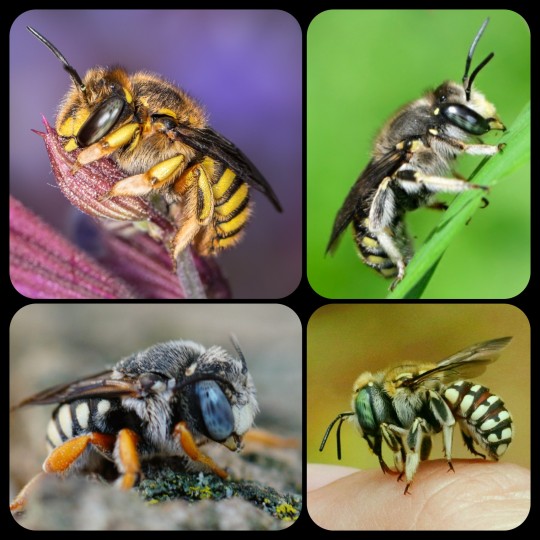
A few different species of wool-carder bee: the top row depicts the European wool-carder, A. manicatum (left) and the spotted wool-carder, Anthidium maculosum (right), while the bottom row depicts the reticulated small-woolcarder, Pseudoanthidium reticulatum, and Porter's wool-carder, Anthidium porterae
Sources & More Info:
University of Florida: The Woolcarder Bee
Oregon State University: European Woolcarder Bees
Bohart Museum of Entomology: Facts about the Wool Carder Bee (PDF)
Bumblebee Conservation Trust: A. manicatum
World's Best Gardening Blog: European Wool Carder Bees - Likeable Bullies
Biological Invasions: Global Invasion by Anthidium manicatum
#entomology#hymenoptera#apiology#melittology#bees#woolcarder bees#nature#insects#arthropods#science#solitary bees#european woolcarder#anthidium#animal facts#cool bugs#cute animals
966 notes
·
View notes
Text

ig - afternoondreams
#kelli soukup#nature#photography#art#nature photography#botany#botanical#bumblebee#melittology#entomology#pollinators#anthecology#pollination#cute#bugs#insects#cottagecore#floral#flora#summer#flowers#peaceful#kansas#garden#animals#meadow#prairie#film#aesthetic#detail
1K notes
·
View notes
Text
Open sezzzzz me.
You should see what they can do for an Orange Crush...
278 notes
·
View notes
Text
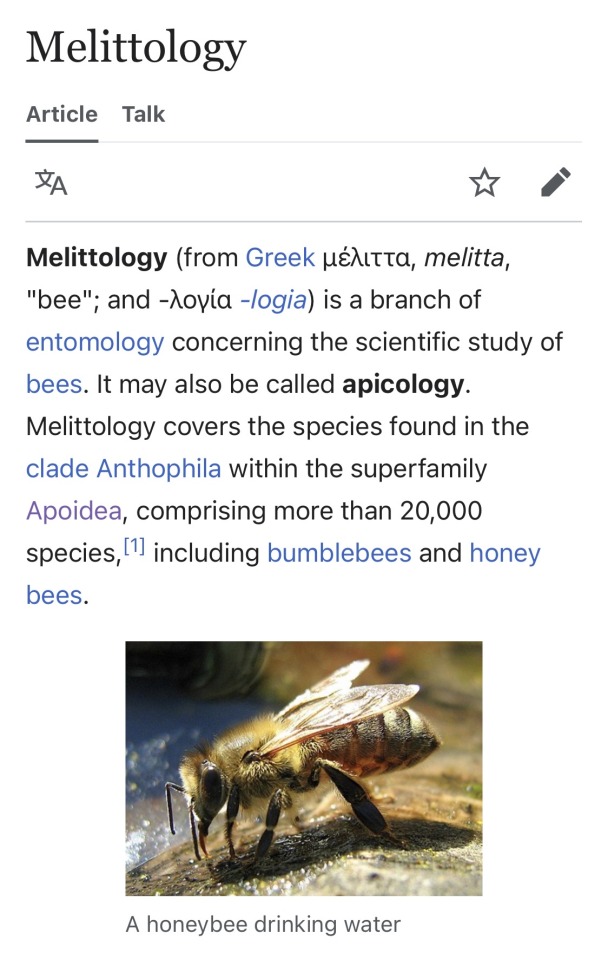

53 notes
·
View notes
Photo

New species of the stingless bee genus Plebeia (Hymenoptera: Apidae), Michael S. Engel, University of Kansas & American Museum of Natural History, Journal of Melittology
117 notes
·
View notes
Text
Seattle Fact #Acht:
A beehive in Montesano has been the subject of much attention today due to containing a sentient speaking bee referring to himself as King Buzzo. He also keeps calling the hive his “honey bucket”.
One last thing of note is that the bees in the honey bucket all buzz in drop-D tuning.
11 notes
·
View notes
Photo

Annnd they're back - Australian Blue Banded Bees (Amegilla) settle in for the night. Thrilled for a second night in a row to have our blue banded guests take up residence Olympus OM-D E-M1 mk2 with M.Zuiko 40-150mm and Godox v1 flash. . . . #bee #beesofinstagram #bluebandedbee #insect #love #blue #australianbees #melittology #olympusomdem1markii #omsystem #breakfree_olympus #オリンパス (at Brisbane, Queenland, Australia) https://www.instagram.com/p/CpznhzWP6SZ/?igshid=NGJjMDIxMWI=
#bee#beesofinstagram#bluebandedbee#insect#love#blue#australianbees#melittology#olympusomdem1markii#omsystem#breakfree_olympus#オリンパス
13 notes
·
View notes
Text
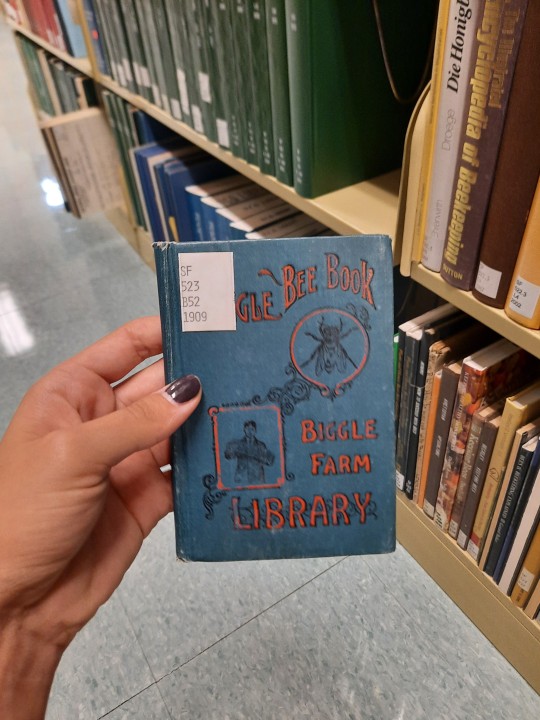




melittology at the univeristy library 🐝
26 notes
·
View notes
Text

The industrious little leafcutter bee, taking resting on a calendula leaf after having cut a disc of leaf from another plant.
It was a hot day in Ireland today and the leafcutter was busy. I'm not sure what plant it was targeting but on each occasion it would fly to a particular corner of the garden and rest on calendula or tomato leaves for approximately one minute before flying off again.
In between cutting leaves of course they are busy collecting pollen from various flowers in the garden.
From Panoramic Ireland
#ireland#plant#leafcutter bee#melittology#photography#vsco#vscocam#irish#photographers on tumblr#nature#entomology#bees#pollinators#bee friendly
25 notes
·
View notes
Text

✨cool bug facts's✨
The Tetragonula carbonaria, or the sugarbag bee!
Goth bee!! 🐝🐝🖤🖤
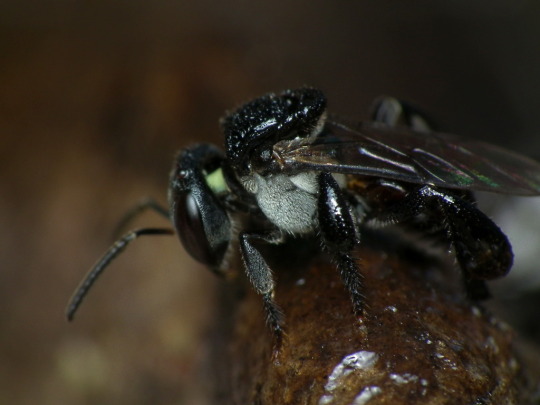
The anatomy of these indefatigable insects!!!
They are a species of stingless bee. This does not mean that they don't have a stinger, rather, they have a functionless stinger.
The adult workers and males are mostly black and have some brown tints in certain areas.
Newly emerged bees are white on every part of their body except their abdomen.
The workers body length is around 3.9 mm to 4.3 mm, and their wing length (including tegula) is around 4.1 mm to 4.6 mm. The males are the same length, but have different antennae.
They produce the largest honey and pollen pots out of the genus Tetragonula.
They store their honey in pot-like structures around the nest, that the queen lays eggs into, and then a worker quickly seals the pot that the queen fertilized.
Unlike other stingless bee species, they store their honey in pots rather than combs.
If their queen suddenly dies, they can build emergency queen cells by fusing two worker-sized cells that contain eggs or young larvae.
Some queens can only produce diploid males, who are infertile and physically weaker. Workers find these males to be a nuisance to the rest of the hive, and might kill a queen who produces diploid males.
The center of their nest is made up of honeycombs in a spiral shape. Even the molecules of these honeycombs are spiral-shaped.
Their honey has a sour taste to it.
Diet.
They pollinate the orchid species Dendrobium lichenastrum, D. toressae, and D. speciosum.
They collect their pollen from the Cycas media, which is a cycad.
Behavior.
Sugarbag bees do not like flying, and will not fly further than they find necessary.
The younger bees perform their work in the nests, and as they get older they will start working outside of nests.
They consistently have four to five worker bees surrounding the nest, seemingly acting as guards.
They will only fly in temperatures higher than 18 °C, and temperatures above 42 °C can kill them.
Their colonies are active all year round, the daily activity period is longer in the southern hemisphere's warmer months. The intensity of the daily flights is most intense in September and least intense in May.
They mummify small hive beetles (Aethina tumida) that enter their nest by coating them in wax, resin, and mud or soil from the nest.
While the workers do have ovaries, they are inactive. This is unusual, as stingless bee workers can produce unfertilized eggs that can grow into haploid males. This may be because the workers do not want to be distracted from their work, so they leave the egg laying to the queen. Another possibility is that the queen does not permit them to lay eggs due to their inferiority, though little antagonism occurs between the queen and workers, making this theory unlikely.
When a worker does produce an egg, it often causes a conflict between the worker and the queen, and the queen will start the patrol the area where new brood cells are being produced, and using a hands-on policy to prevent this from happening again. Unlike other stingless bee species, the queen does not harm the worker who laid the egg.
When threatened, all nest mates will form a bee-cloud and wrestle intruders, usually causing both the bees and intruders to die. The sugarbag bees may be the only party dying, however, if their intruder is not a bee or a significantly larger creature than the bees, such as a human.
Their main predator is the pink flower spider, or the Diaea evanida, which is a spider crab. This crabs reside on flowers that bees tend to pollinate and can change their colors to suit the preferences for different bee species, but the sugarbag bees do not attract to any of these colors.
Sugarbag bees tend to choose one specific kind of flower to pollinate, usually only for specific trips, but sometimes an individual bee might pollinate only one type of flower.
The males may fly several kilometers away from the nest in order to mate, and may never return to their original colony.
Habitat.
They're exclusively located in Australia, from Queensland to southern New South Wales.
The nests are found in tree hollows and other cavities throughout forests, woodlands, and heaths. T. carbonaria nests are also found in Telstra pits in rural and urban areas, and will inhabit water meters when their usual habitats are not available.
They prefer larger trees and wider tree hollows or cavities in order to produce a sufficient amount of insulation.
#bugs#insects#bees#stingless bees#sugarbag bee#tetragonula carbonaria#bugblr#entomology#melittology#apiology#cool bugs#cool bug facts#cool bug's#cool bug fact's
9 notes
·
View notes
Text
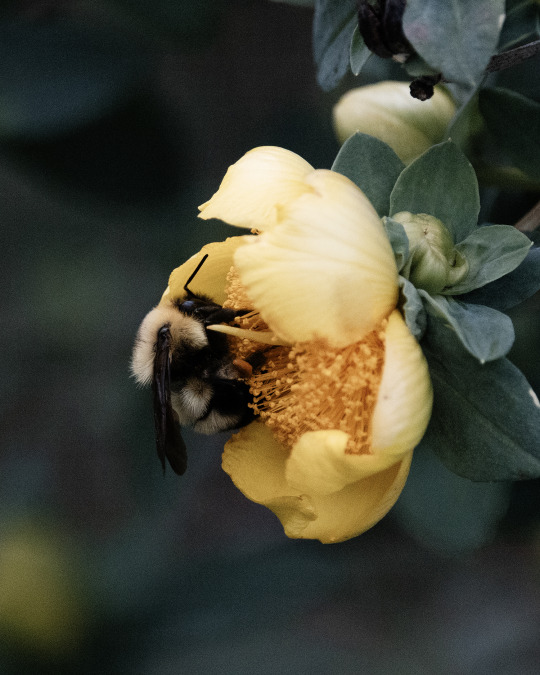
ig - afternoondreams
#kelli soukup#nature#photography#art#nature photography#botany#botanical#bumblebee#melittology#entomology#pollinators#anthecology#pollination#cute#bugs#insects#cottagecore#floral#flora#summer#flowers#peaceful#kansas#garden#animals#meadow#prairie#film#aesthetic#detail
272 notes
·
View notes
Text
Giant Honeybees (Asia) protect their open hives from predators with a ripple effect known as "shimmering"
2 notes
·
View notes
Text
gertie is becoming an excuse for brennan to give us melittology and honey facts
#gertie bladeshield#dimension 20#d20#fantasy high#fantasy high junior year#fhjy spoilers#fantasy high junior year spoilers#d20 fantasy high#dropout#intrepid heroes#brennan lee mulligan
30 notes
·
View notes
Photo

Annnd they're back - Australian Blue Banded Bees (Amegilla) settle in for the night. Thrilled for a second night in a row to have our blue banded guests take up residence Olympus OM-D E-M1 mk2 with M.Zuiko 40-150mm and Godox v1 flash. . . . #bee #beesofinstagram #bluebandedbee #insect #love #blue #australianbees #melittology #olympusomdem1markii #omsystem #breakfree_olympus #オリンパス (at Brisbane, Queenland, Australia) https://www.instagram.com/p/CpzoPFXvL-8/?igshid=NGJjMDIxMWI=
#bee#beesofinstagram#bluebandedbee#insect#love#blue#australianbees#melittology#olympusomdem1markii#omsystem#breakfree_olympus#オリンパス
1 note
·
View note
Note
do you have any hyper fixations or special interests that arent crime related?
John. Drugs. Science in general, especially neurochemistry, poisons (although that is a bit crime related I suppose), anatomy, melittology, entomology, botany, music. As a child I was fascinated with the history of pirates and egyptology.
#might have forgotten some#roleplay#rp#sherlock rp#johnlock roleplay#johnlock rp#sherlock roleplay#bbc sherlock#sherlock#sherlock holmes#sherlock holmes rp#sherlock holmes roleplay#sherlock replies#sherlock holmes replies#special interest#hyperfixation
26 notes
·
View notes
Text

Wenvier Bingo - Professors
Thank you @heavenlyvixen for being a sounding board for my ideas. I wouldn't have the inspo for this without you. I'm sure some of the dialogue will seem familiar. 😜
Eugene was buzzing with excitement to attend Innsmouth University. It was the premier school for melittology with a focus on apiology, a branch of entomology. He found his people in the science department, and although he got tired of repeating and dumbing down what his field of study was for his degree, he was able to succinctly tell people:
“I’m gonna study honeybees.”
If it were up to him, he’d spend all his class time in the biology department or working in the apiary club called the Hummers.
But alas, Innsmouth had a general studies requirement and encouraged students to be “well rounded.”
So, he took a painting and a creative writing course.
The two professors could not be more different.
Professor “Call me Xavier” Thorpe taught Intro to Painting. Professor Thorpe, Eugene was never going to call a Professor by their first name as it was ingrained in him since private preschool to never be so informal with a teacher, was talented and knew what he was talking about when it came to colour theory and technique.
But he was the most unserious professor Eugene had ever come across.
Professor Thorpe wore camo pants to class, he was often mistaken for a student by other members of the faculty, invited his students to picnics on the quad, and often took the class on field trips to art museums where he wasn’t afraid to get down and dirty to kneel or squat when enthusiastically educating them on the artwork.
Even for the decorative molding which wasn’t technically part of the exhibit, Professor Thorpe saw art in everything.
Eugene could admire and respect the love of art Professor Thorpe had…but was baffled when the professor was found asleep on one of the art exhibits on campus and he wondered how he kept his job.
Then there was Professor Addams. She never offered for anyone to call her by her first name, but she was the type of severe teacher that Eugene was convinced she didn’t have a first name. Her name was Professor Addams, and no one could tell him otherwise.
She taught creative writing and specialized in the macabre and mystery genre. She even had a popular series based on a heroine named Viper de la Muerte. He was surprised she was even teaching as there was a rumour on campus that she had just gotten movie deals for her series.
Professor Addams was the consummate professional. She was always pristinely dressed and well put together, and she put the fear of God into her students. So much so that they jokingly said The Devil Wrote Mystery Novels, and when she walked across campus, people got out of her way.
One day, when someone said she was married to Professor Thorpe, Eugene literally laughed out loud and went about his classes. When others tried to convince him that the beautiful creative writing professor was married to the goofiest teacher Eugene ever had, he laughed again.
It wasn’t until he saw them kissing under a gnarled oak tree on the quad, did he finally give credence to the rumours.
“How in the hell are those two married?” he asked his classmates while at the art studio, before Professor Thorpe arrived. He would never have done it in Professor Addams’ class, too afraid she might accidentally overhear.
He looked around, paranoid she may be around the corner.
“I know, right?” Pugsly could only laugh as it was a ridiculous thought. “They’re so opposite of each other.”
“And not just in demeanor and how they dress,” Yoko added, “He’s a tall and she’s a smol.”
The class laughed as they got their supplies together.
“She’s like a tiny koala and he’s a eucalyptus tree,” someone else commented.
“Yeah, I bet she climbs him like a tree,” Yoko said suggestively. That was when the girls in the class heartily agreed and giggled.
Eugene just rolled his eyes. While he thought Professor Thorpe was goofy as hell, many of the women on campus swooned over his 6' 2" height, dreamy green eyes, and heart stopping dimples.
Their words, not his.
Despite his bafflement at their relationship, they both ignited a love for the arts in him. After that semester, he decided to double major in writing and did painting as a hobby.
The Hummers’ beehives were treated to a makeover and had never been as colourful and beautiful.
He happily consulted with Professor Addams on how one might die from a swarm of honeybees for her next novel.
He gave both professors excellent reviews on RateMyProfessor.com.
Card under cut
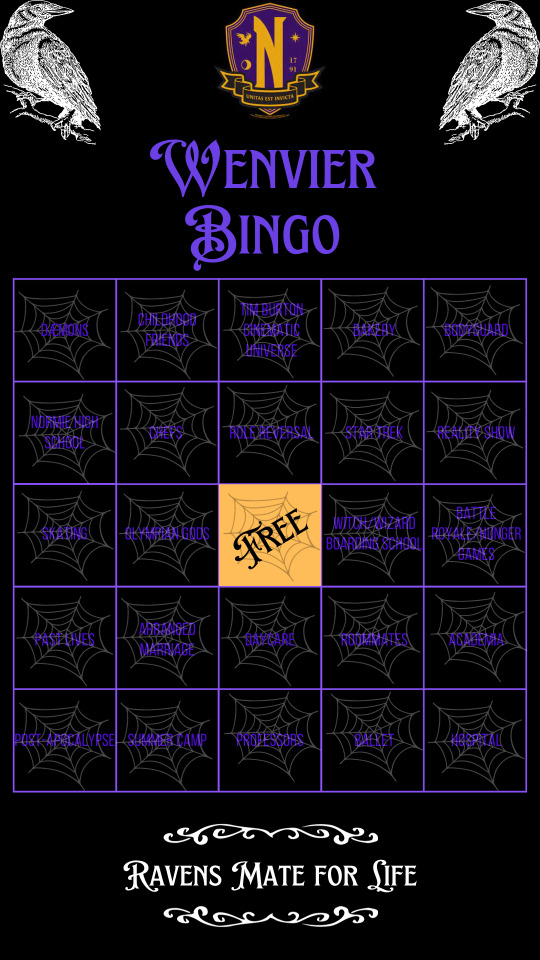
#wenvier#wenvier bingo#wenvier moodboard#wednesday addams#eugene ottinger#xavier thorpe#wednesday x xavier#bingo blackout#holy shit I did it!
22 notes
·
View notes